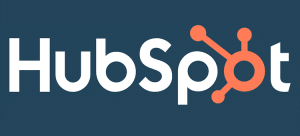Organizations today rely on a combination of programs, apps, and software to conduct business. These IT programs could be from third-party vendors or built in-house.
These IT tools can help your employees do their job better, but it also means an increased opportunity for technical issues. IT help desk providers are the bridge between technology and its users. They troubleshoot and fix IT problems, ultimately helping employees serve customers better.
You can have an in-house team or work with an MSP that offers outsourced help desk services.
For your business to run smoothly, your help desk team should be able to provide assistance in a timely manner. The article will look at common IT help desk issues and their solutions to help optimize your team’s productivity.
Here are some common help desk problems you should address to improve overall employee and customer experience.
1. Vague and Intangible Help Desk Goals
An IT help desk is responsible for tending to IT issues related to specialized software, applications, and tools. Their scope has grown to resolve product, service, and process queries. In addition, they can get tickets from multiple channels.
When faced with so many responsibilities, it is easy for boundaries to blur and employees to get overburdened. As a result, employees do not have a clear perspective on what they can and cannot do. This creates confusion and negatively affects user experience.
You may set user satisfaction as one of the goals for your team. But how will your employees achieve this goal? And how will you measure employee performance against such intangible goals?
Solution
You need to set SLAs and goals for your help desk teams. SLAs are essential because they help set clear expectations and standards of service.
You can set SLAs for response and resolution time, availability, and scope of issues. This removes vagueness and lets employees know what is expected of them.
You can also use these SLAs to measure employee performance and identify improvement areas.
2. Lack of a Centralized Knowledge Base
Knowledge fragmentation is an issue that most help desks face. It leads to inconsistent levels of service quality. Issues may take longer to resolve and leave users frustrated.
Your team has the required knowledge, but you will fail to leverage the asset due to poor organizational skills.
Solution
First, establish a centralized knowledge base. Next, create processes that will encourage employees to share knowledge. Also, ensure the IT infrastructure is optimized to support such processes.
A centralized knowledge base helps employees troubleshoot and resolve issues more quickly. In addition, it cuts down the learning curve for new employees.
It also helps consistently maintain the standard of service offered.
3. Time Spent on Repetitive Issues
Repetitive issues can take a toll on the help desk team. These issues can be time-consuming and divert resources from critical business deliverables.
Password issues, computer performance, printers not working, and internet outages are some common IT issues faced by users. Understandably your employees can get bored working on the same thing over and over again.
Your team’s productivity takes a hit in case of time spent on repetitive issues.
Solution
Automation, chatbots, and self-service portals are some solutions that can take care of repetitive tasks.
For example, if password resets are a recurring issue, you can create documents detailing how users can reset passwords independently.
Or if an upgrade requires users to make some changes in their settings, a proactive email with steps can save your help desk team’s time and effort.
You could also use outsourced help desk services and let your internal IT team focus on critical aspects like security.
4. Lack of Communication
Some IT issues may be straightforward to resolve, while others may take time and input from multiple teams. In either case, employees should respond to the ticket and provide the user with a resolution time frame.
In the absence of such communication, the user does not know what is happening with their ticket. They can get frustrated and feel undervalued, leading to poor customer satisfaction.
Solution
You can create processes wherein employees have to adhere to a response SLA. You can create communication templates and provide updates to users anytime new information is added to their tickets.
You can also automate the process. For example, you can send emails with details like the person working on the issue, their availability, and resolution time to users.
5. Retaining Top Talent
Having the right tech talent by your side can give your organization an extra edge in the marketplace. But the challenge is hiring and retaining top tech talent.
The process of recruiting and training requires time, effort, and money. It also overburdens your existing team with additional responsibilities.
According to a McKinsey report, closing the talent gap, improving candidate experience, and understanding that the employee market is candidate-driven are some of the challenges organizations have to deal with.
Solution
You need to do away with rigid policies and bad practices. Lack of growth opportunities and poor management are some of the top reasons employees quit.
You need to give employees the space to do their job. Provide them with tools and support for automation and innovation. Offer them upskilling opportunities.
More importantly, listen to what your employees have to say. Having meaningful discussions can produce outcomes beneficial for the company and the employee.
6. Scaling the IT Help Desk
Scaling the IT help desk up or down, depending on how your business performs, can be challenging. You cannot keep letting employees go and hiring them back when the need arises.
Such a practice can prove to be costly. Also, productivity takes a hit as new employees learn on the job. You may not be able to pursue new opportunities as you do not have a team backing you up.
Solution
Explore outsourced help desk services offered by MSPs. They can align the right skilled employees to your help desk team.
With their talent pool, they can add new members to your team as and when required. The team can be curtailed accordingly if your business is going through a lean period.
You do not have to worry about hiring, training, and retaining employees.
Summary
An IT help desk offers benefits like efficient operations, improved ROI, and employee experience.
Techniques like defining SLAs, streamlining processes, creating a centralized knowledge base, automation, and working with an MSP, can go a long way in optimizing the help desk team and improving productivity.
As you search for a help desk solution, you’ll discover a range of choices designed to meet specific requirements. These options include help desk services for hospitality, finance, healthcare, ecommerce, and even outsourced IT help desk services. Choosing the most suitable solution from this diverse selection can greatly improve the efficiency and effectiveness of your business operations.







